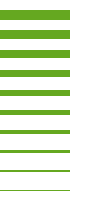https://doi.io-warnemuende.de/10.12754/msr-2023-0122
doi:10.12754/msr-2023-0122
© Author(s) 2023. This work is distributed
under

Dieses Werk ist lizenziert unter einer Creative Commons Namensnennung - Nicht kommerziell - Keine Bearbeitungen 4.0 International Lizenz.
Die Meeresbiologie am Institut für Meereskunde Warnemünde (1960-1991)
Abstract. Anhand meeresbiologischer Publikationen des Instituts für Meereskunde (IfM) und der Archivunterlagen des Instituts für Ostseeforschung Warnemünde (IOW) aus den Jahren 1960 bis 1991 wird die Entwicklung der meeresbiologischen Forschung am Standort Warnemünde beschrieben.In dem 1952 in Warnemünde gegründeten Ostsee-Observatorium des Hydro-Meteorologischen Instituts (HMI), das den Seestreitkräften der DDR zugeordnet und vorrangig auf die Sicherung der Schifffahrt und den Küstenschutz ausgerichtet war, spielten Fragen der Meeresbiologie keine Rolle. Das änderte sich erst durch die Ausgliederung des 1958 in Institut für Meereskunde umbenannten HMI in die Deutsche Akademie der Wissenschaften zu Berlin (DAW) im Jahre 1960.Erste meeresbiologische Arbeiten erfolgten Anfang der 1960er Jahre zunächst in Verbindung mit der Sedimentkartierung in der Mecklenburger Bucht im Rahmen der IfM-Abteilung „Meeresgeologie und Meeresgeomorphologie“. Im Jahre 1966 wurde eine chemisch-biologische Arbeitsgruppe eingerichtet und ab 1970 gab es eine kleine Arbeitsgruppe „Biologie“ im IfM, die bis 1991 auf fünf Meeresbiologen aufgestockt wurde.Zur Sedimentkartierung in den 1960er Jahren wurden eine Kartierung der Bodenfauna in der Lübecker und Mecklenburger Bucht mit dem Ziel vorgenommen, das Makrozoobenthos dieser Seegebiete zu beschreiben und Angaben über die Abundanz und die ökologischen Anforderungen der Arten zu machen.In der 2. Hälfte der 1960er Jahre wurden an der Norwegischen Rinne in der Nordsee erste produktionsbiologische Untersuchungen vorgenommen. Mit dem Internationalen Ostseejahr 1969/70 wurde die Ostsee zum Schwerpunkt der Arbeiten der AG Biologie, wobei die Produktionsbiologie, insbesondere die Primärproduktion des Phytoplanktons, im Mittelpunkt stand. Neben den Zeitreihenuntersuchungen wurden ab 1977 auch experimentelle Arbeiten zu Stoffwechselvorgängen im Pelagial – sogenannte ökologische Experimente – in Behältern durchgeführt, die in den Folgejahren in größerem Umfang weitergeführt wurden. Die Meeresbiologen der AG Biologie, insbesondere ihr Leiter SIGURD SCHULZ, waren aktiv in der Organisation der Ostseebiologen und später im Rahmen der HELCOM tätig und förderten damit die Einbindung der Meeresbiologen des Instituts in die internationale Ostseeforschung.
Abstract. The development of marine biological research at Warnemünde/Germany between 1960 and 1991 is described by means of both marine biological publications of the Institute of Marine Research (IfM) and archival sources of the Institute of Baltic Sea Research Warnemünde (IOW).In 1952, the Baltic Sea Observatory of the Hydro-Meteorological Institute (HMI) was founded in Warnemünde integrated into the GDR Navy. The tasks of the Observatory, renamed in Institute of Marine Research in 1958, were safety of commercial shipping and coastal protection. Problems of marine biology were irrelevant. This changed not until the integration of the IfM into the German Academy of Sciences (DAW) in 1960.First marine biological investigations were carried out in the beginning of the 1960s in the IfM department „Marine Geology and Geomorphology“ associated with sediment mapping in the Mecklenburg Bight. In connection with that, a mapping of the bottom fauna of the Lübeck and Mecklenburg Bights were performed in order to describe the distribution of macrozoobenthos, their abundance and the ecological conditions.In 1966, a “Chemical-biological department” was established and a small department “Biology” existed in the Institute from 1970 onwards that was enlarged to five marine biologists till 1991.First research in phytoplankton and zooplankton production was performed during oceanographic investigations of the Norwegian Trough in the eastern North Sea during the second half of the 1960s. Starting during the International Baltic Year (IBY) 1969/1970, the focus of investigation of the biological department changed to the Baltic Sea aiming mainly at primary production of phytoplankton. Time series of phytoplankton, chlorophyll, primary production and zooplankton were measured at anchor stations in the western Baltic Sea. From 1977 onwards, experimental studies on successions or metabolic processes of plankton communities in the marine pelagic zone started carried out in plastic bags. The so-called ecological experiments (OEKEX) were intensified during the following years. The marine biologists of the institute, in particular their head SIGURD SCHULZ, were very active in the Baltic Marine Biologists (BMB) organization and later in HELCOM activities that promoted the integration of the institute’s marine biologist into the international Baltic research. In 1970, investigations into phytoplankton and zooplankton production started in the upwelling areas of Northwest and Southwest Africa. The seasonal variations of upwelling and their impact on biological productivity as feeding basis for commercial fish should be explored. Related research was carried out in the Mozambique Channel in 1980.In connection with the positive evaluation of the Institute of Marine Research in 1991 the German Scientific Council recommended the foundation of a Baltic Sea Research Institute in Warnemünde including a powerful section “Marine Biology”. The main task of this section should be the ecology of the Baltic Sea with regard to variations caused by anthropogenic and climatic impacts.The contribution is completed by a lot of figures, several tables and a comprehensive list of marine biological publications and archival material prepared by the marine biologists of the Institute of Marine Research.
